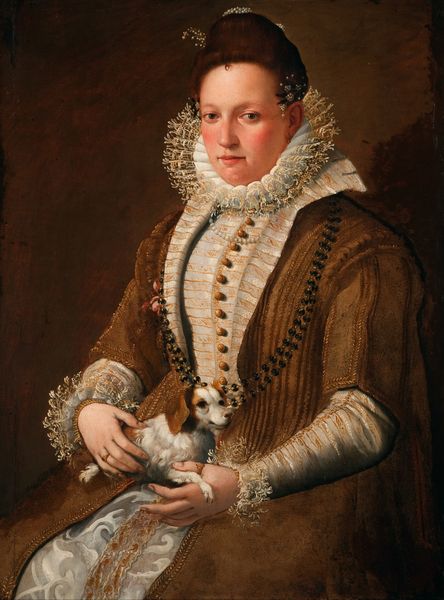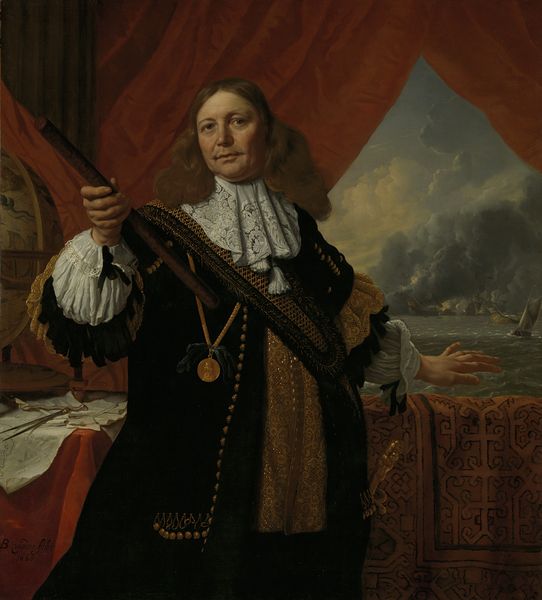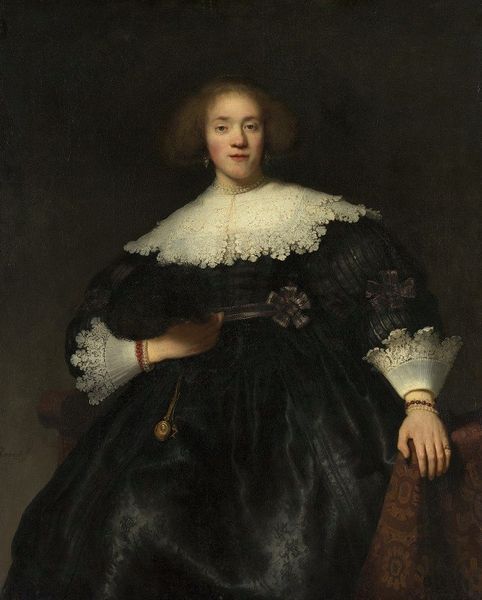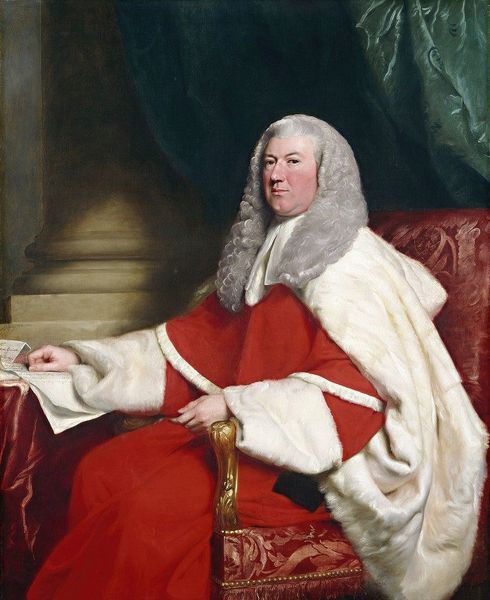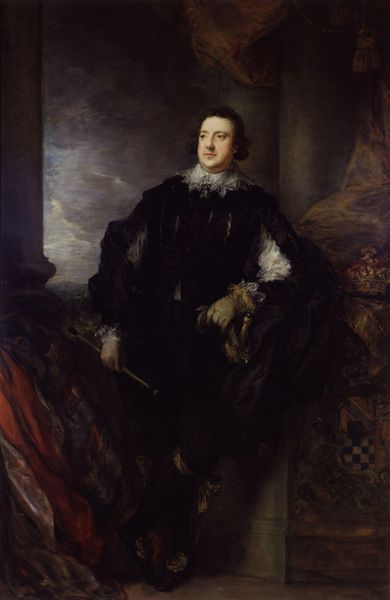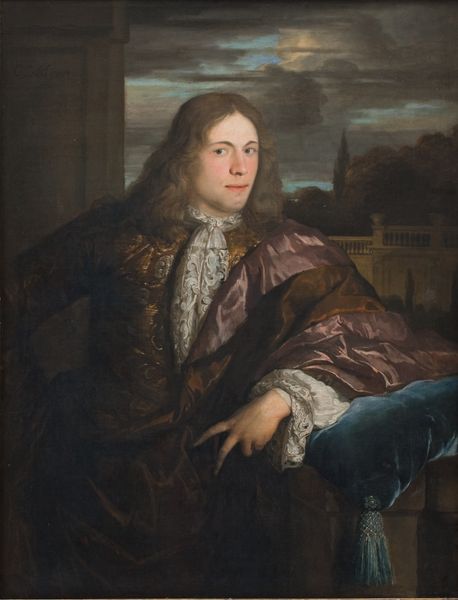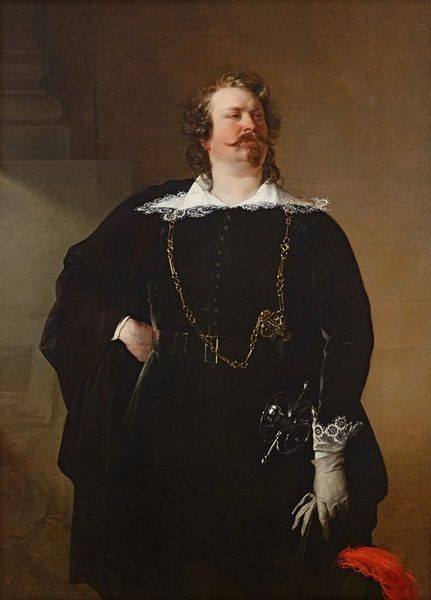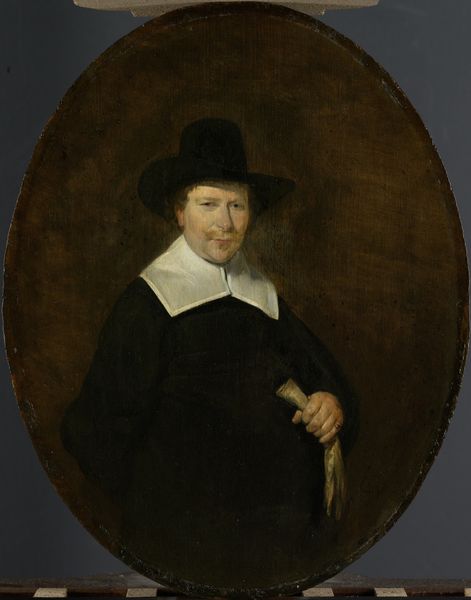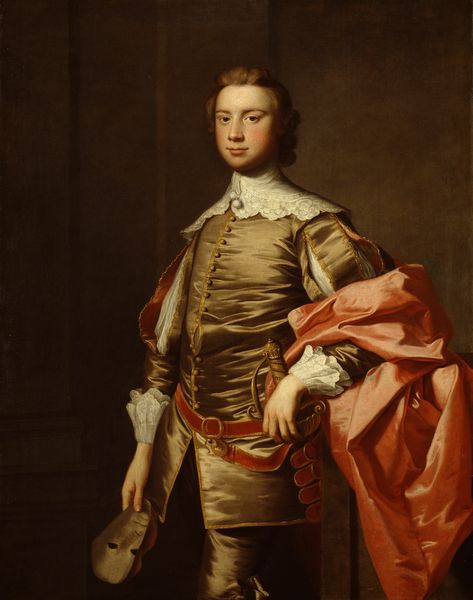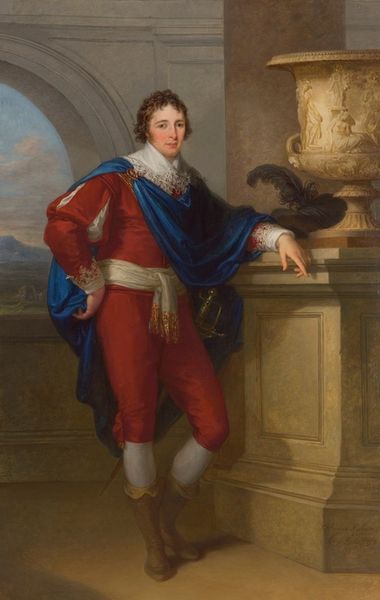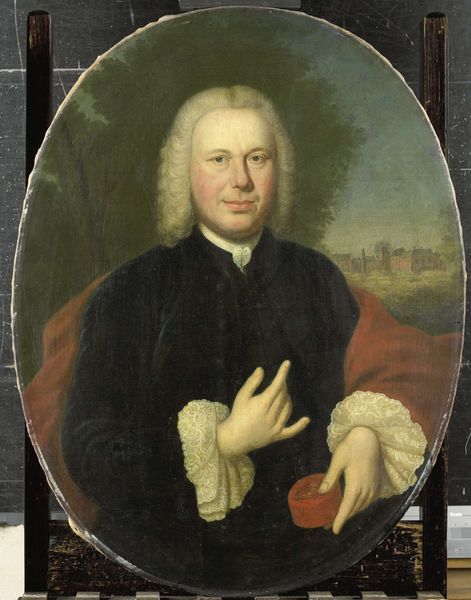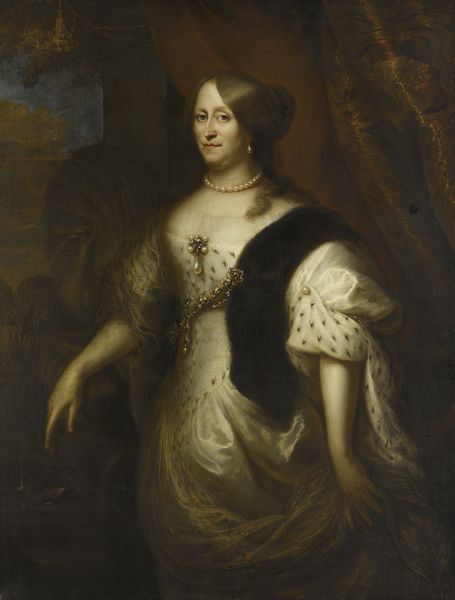
oil-paint, oil-on-canvas
#
portrait
#
baroque
#
dutch-golden-age
#
oil-paint
#
genre-painting
#
history-painting
#
oil-on-canvas
Dimensions: 48 3/8 x 39 3/8 in. (122.87 x 100.01 cm) (canvas)
Copyright: Public Domain
Curator: I’m struck by the somber yet confident air emanating from this work. The figure fills the space with a quiet power. Editor: We’re looking at "Portrait of a Burgomaster" by Bartholomeus van der Helst, completed sometime between 1665 and 1670. It’s currently housed here at the Minneapolis Institute of Art. Given the artist and era, one could situate this portrait within the context of Dutch Golden Age painting. What meanings can we extract from this personification of wealth and power? Curator: The burgomaster's garments tell such a clear story. The lace, the gold embroidery, even the positioning of his hand—it’s all about presenting an image of wealth and authority. He’s not merely wearing clothes; he’s performing status. This connects with larger discussions around the era’s social stratification, wouldn’t you say? Editor: Certainly. The interplay of textures is captivating, isn’t it? The smoothness of his face against the velvety black coat. Then there’s the geometrical precision of the column to the left, counterpointed by the swirling suggestion of landscape on the right. It all directs our gaze towards the figure's face, his rather calm expression. Curator: That expression speaks volumes. While the burgomaster might have possessed certain attributes and resources that facilitated the accumulation of authority and status, it would be a mistake to perceive the subject as merely performing these constructs without confronting inherent biases and systemic disparities. Editor: Perhaps, but consider the structure; it’s all organized to convey order. The use of light and shadow, the subtle symmetry—it implies a world governed by reason and controlled power. Is it not about the establishment asserting dominance through pictorial space, with all its visual signs of self-important opulence? Curator: These kinds of images often upheld societal imbalances of the time. However, from a contemporary perspective, it is interesting to see this individual’s persona represented for what he is. I mean, could we not even question whose values the work defends, subtly questioning the legacy of the wealthy class within society’s past? Editor: That’s an interesting tension, questioning if an aesthetic system like this could contain, or unintentionally reveal, cracks in its façade of absolute self-assuredness. Curator: Indeed. The act of seeing can itself be a form of interpretation and judgment. Editor: An elegant distillation! A lens to view history, society, and representation.
